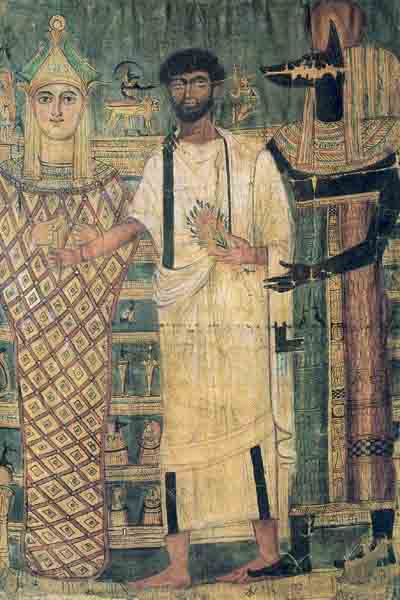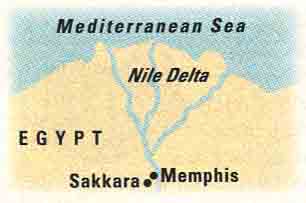
Jackal-headed Anubis (above), considered the inventor of mummification, presents the white-robed deceased to Osiris (left), the lord of the underworld, on this funerary shroud dating to about 180 A.D. Measuring 71 by 53 inches, the linen shroud once enveloped a mummy, with the realistic portrait placed directly above the deceased and the two deities folded over the sides of the mummy.
The shroud was discovered in Sakkara, Egypt, the large necropolis used by residents of Memphis from the First Dynasty (2920–2770 B.C.) through the Greco-Roman period (332 B.C.–395 A.D.). Painted in profile with human body, jackal face, pointy ears and black fur, the deity Anubis appears in a conventional Egyptian guise. The deceased, however, depicted frontally as a recognizable middle-aged man with curly brown hair, dark eyes and full beard, follows Greco-Roman tradition. Only his feet, which indicate his movement toward Osiris, reveal strong native Egyptian influence. Osiris, combining both styles, has a fleshy, frontal face and a flat, two-dimensional body. As the embodiment of death, Osiris is shown as a mummy.

Painted tableaux fill the background. To the right of Osiris’s face, Anubis stands beside the mummy, lying on a lion-shaped bed. Anubis appears again to the right of the deceased’s head, where he is shown as a man holding the key to the underworld and a balance: If the deceased’s heart is heavy with sin, he will not be allowed into Osiris’s domain.
Already a library member? Log in here.
Institution user? Log in with your IP address.

